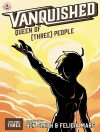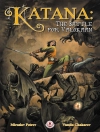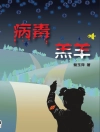In ‘The Steel Flea, ‘ Nikolai Leskov presents a masterful blend of folklore and realism, weaving a captivating narrative around the eccentric tale of a gifted Russian craftsman who conceives an extraordinary contraption: a steel flea that can leap a remarkable distance. Set against the backdrop of 19th-century Russia, the prose is imbued with vivid imagery and robust characterizations, reflecting Leskov’s unique literary style that merges humor with moral introspection. With its exploration of technology and human ingenuity, the story serves not only as an engaging fable but also as a commentary on the broader social and cultural currents of its time, illuminating the tensions between tradition and progress in the rapidly modernizing landscape of Russia. Nikolai Leskov (1831-1895) was a prominent figure in Russian literature, renowned for his keen observations and intricate storytelling. His experiences as a provincial clerk and a soldier provided him with rich insights into the Russian psyche, which he skillfully translates into his writings. Leskov’s background in a changing Russia informed his themes of craftsmanship and the human spirit, making his works resonate deeply with audiences. His familiarity with Russian folklore and societal norms enables him to craft narratives that both entertain and provoke thought. ‘The Steel Flea’ is highly recommended for readers who appreciate literature that balances whimsical invention with poignant social commentary. Leskov’s ability to juxtapose the marvelous with the mundane invites readers to reflect on the complexities of life and the transformative power of creativity. This tale not only enriches our understanding of Russian culture but also posits timeless questions about the interplay between art, technology, and humanity.
Despre autor
Nikolai Leskov (1831–1895) was a distinguished Russian writer, known for his unique narrative techniques and his exploration of the moral and social issues of his time. Born in Gorokhovo, Oryol Governorate, in the Russian Empire, Leskov began his career in clerical positions before turning to journalism and literature. His work offers a blend of realism and satire, with a touch of the picaresque, often delving into the lives of Russian middle and lower classes. His literary style is characterized by keen observation, a rich use of language, and the incorporation of Russian folklore, which has earned him a place among the pantheon of Russian literary greats alongside Tolstoy and Dostoevsky. One of his most celebrated tales, ‘The Steel Flea’ (also known as ‘The Tale of the Cross-eyed Lefty from Tula and the Steel Flea’), embodies his artistry, delivering a story that combines technical fascination with moral nuances, all presented through the lens of a satirical fable. This work, among others, showcases Leskov’s mastery of storytelling and his adept use of skaz, a narrative form that mimics oral speech. Leskov’s contribution to literature extends beyond his storytelling; his keen observations of his homeland at a time of great change have provided invaluable insights for historians and literary scholars.












